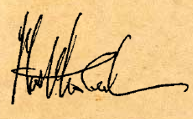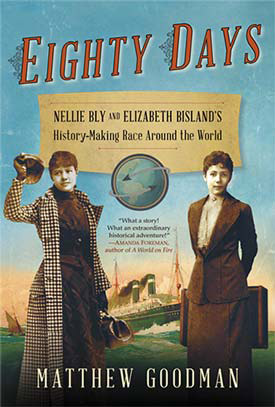Nellie Bly is one of those historical figures whom people seem almost to know. Chances are they read a book about her in the fourth or fifth grade, one of those hagiographic YA biographies offering courageous role models from the past for modern young women. Decades later those books, with their large type and captioned line drawings, merge together in memory, and one seems to recall that Nellie Bly might have been a celebrated war nurse (that was actually Florence Nightingale, or Clara Barton), or the founder of the Girl Scouts (Juliette Gordon Low), or a suffragist, or a worker on the Underground Railroad.
As for me, long into adulthood I knew her mainly as the namesake of the old Nellie Bly Amusement Park, located not too far from my home in Brooklyn – an amusement park, I must admit, to which I’d never been. Then one day, searching for a new book idea, I happened across an Internet item about her and discovered that Nellie Bly had been, in fact, a late 19-century newspaper reporter. But not just any reporter – an investigative reporter for Joseph Pulitzer’s The World, the most widely read paper in New York. No female journalist before her had ever seemed quite so audacious, so willing to risk personal safety in pursuit of a story. In her first exposé for The World Bly went undercover, feigning insanity so that she might report first-hand on the mistreatment of the female patients of the Blackwell’s Island Insane Asylum. In later stories she worked for pennies in a paper-box factory; applied for employment as a servant; sought treatment in a medical dispensary for the poor, where she narrowly escaped having her tonsils removed. Once, to expose the workings of New York’s white slavery trade, she even bought a baby.
In the fall of 1888, Bly conceived her most audacious adventure yet. She strode into the office of The World’s business manager, George Turner, and told him that she wanted to go around the world faster than anyone ever had before her – to beat in real life the fictional mark of eighty days set by Phileas Fogg in Jules Verne’s novel Around the World in Eighty Days.
“It is impossible for you to do it,” Turner said firmly. The World couldn’t very well have a young female reporter wandering across the farthest reaches of the globe without a chaperon; it was far too dangerous. (In those days, newspaper editors didn’t even feel comfortable sending their female reporters across the city, much less around the world.) Bly tried to protest, but Turner cut her off. “There is no use talking about it,” he said. “No one but a man can do this.”
“Very well,” Bly replied angrily. “Start the man, and I’ll start the same day for some other newspaper and I’ll beat him.”
Nellie Bly left George Turner’s office that day having at least obtained the promise that if The World was to send anyone racing around the world, it would be her. One year later (when The World’s circulation had begun to decline, and they were looking for a quick injection of publicity), Bly got the call she had been waiting for: she could begin her race.
To travel around the world, Nellie Bly carried only a single bag – a leather gripsack measuring, at its bottom, sixteen by seven inches. In that small space she managed to pack a silk bodice, three veils, a pair of slippers, a set of toiletries, an inkstand, pens, pencils, paper, pins, needles and thread, a dressing gown, a tennis blazer, a flask and drinking cup, several changes of underwear (silk for warm weather, flannel for cold), handkerchiefs, and a jar of cold cream. She was determined to carry only a single bag on her trip, because she wanted her travel to be reduced to its most efficient possible form (with no need to check trunks or look after wayward bags), and, just as important, because she wanted to give the lie to the timeworn notion that a woman could not travel without taking along innumerable bags and steamer trunks.
On the morning of November 14, 1889, Nellie Bly set out on the steamship Augusta Victoria, heading across the Atlantic.
Learning for the first time about Bly’s remarkable journey, I understood instantly that this was the book I wanted to write. For a narrative historian, the story offered all kinds of opportunities. Bly herself – scrappy, ambitious, independent – made for a fascinating main character. The race provided a ready-made plot line. And I relished the opportunity to describe the exotic places she had been; thinking about the race, my mind filled with images: Nellie Bly carried by rickshaw through the narrow streets of Hong Kong, careening on a train through the French Alps, sailing on a moonlit Suez Canal.
But then, once I began my research for the book, I discovered something even more astonishing. Nellie Bly, as it turned out, wasn’t just competing against time, or even against a fictional character named Phileas Fogg. She was racing against another young female journalist. This woman was named Elizabeth Bisland; she was a reporter for a rival New York publication, and she had been almost entirely forgotten by history.
Elizabeth Bisland, though, was a remarkable woman in her own right. She had grown up on a Louisiana sugar-cane plantation ruined by the Civil War (her family’s home had been the site of a ferocious battle that later became known as the Battle of Fort Bisland). At the age of 24, with only fifty dollars in her purse, she moved to New York, where she contributed poetry and essays to a variety of magazines; she was genteel, soft-spoken, and was commonly referred to as “the most beautiful woman in New York journalism.” She was a believer, more than anything, in the joys of literature, which she had first experienced as a girl in tattered, ancient volumes of Shakespeare and Cervantes that she found in the ruined library of her family’s plantation house.
On the morning of November 14, 1889, Bisland was unexpectedly summoned to her publisher, John Brisben Walker, where Walker informed her that she was to leave New York that evening for San Francisco, and then proceed onward from there around the world; if at all possible, he was hoping that she could do it faster than anyone ever had before. Bisland replied that she intended to do nothing of the sort. But Brisben was not to be denied, and after a good deal of heated discussion (Bisland would say later only that Walker made “substantial arguments”), she finally relented. At six o’clock that evening, still reeling from shock, Elizabeth Bisland found herself on a New York Central railroad train heading west to San Francisco.
So on that day these two very different young women each set out from New York City – Bly heading east, Bisland heading west. For the next two and a half months their race would captivate America, and much of the world besides. And it captivated me as well, for the four years or so during which I worked on the book. I was thrilled, for that time, to travel alongside them, as I am now to introduce readers to Elizabeth Bisland, and to remind them, all over again, about Nellie Bly.
I hope you enjoy Eighty Days!



